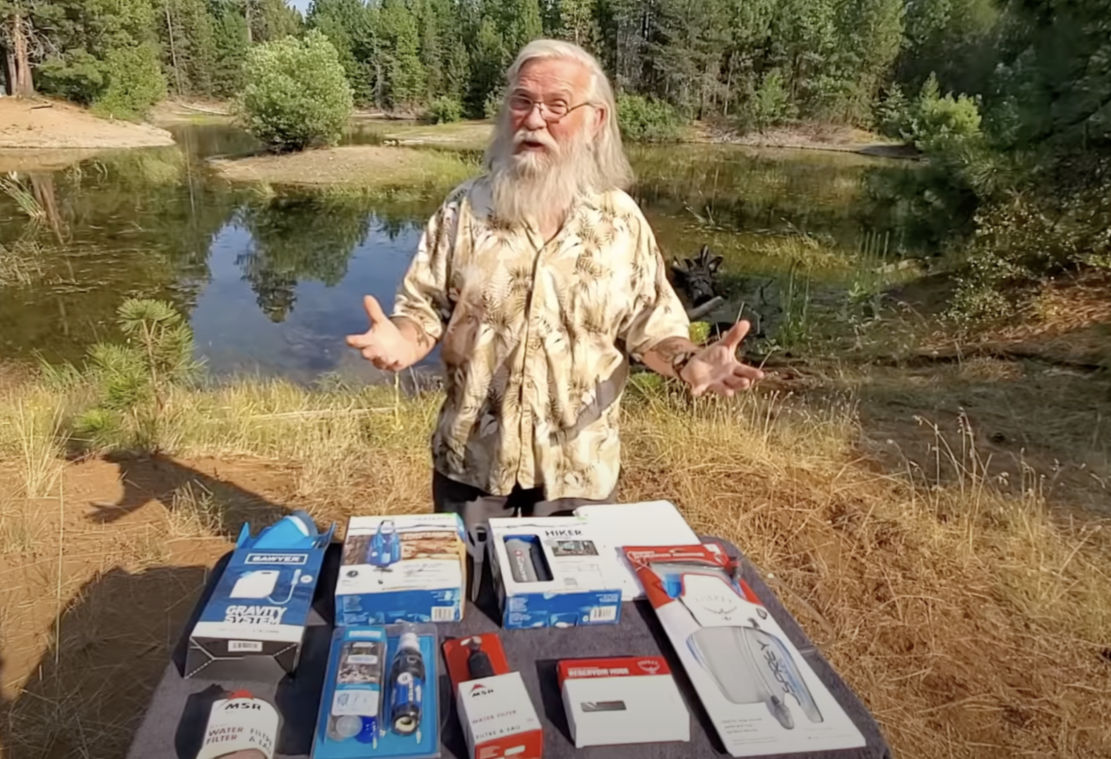
AS WE LEARNED FROM THE PANDEMIC, supplies of basic necessities aren’t a guaranteed thing. So I think it’s smart to have a backup for the most critical basic of all: water. You can go several days without food but not without water.
Even if there isn’t a problem with the water supply chain, you might not want to leave your remote boondocking spot to refill your jugs in the world of faucets.
What’s in the water?
Although water in the wild is cleaner than most, it’s still suspect. It might contain organic substances from various forms of life living in and around the water, industrial, agricultural and household waste, along with bacteria, viruses and protozoans.
Water filters can clean most water well enough for human use. Sometimes additional steps need to be taken, like purification tablets, UV treatment, or boiling.
Different types of water filters
Charcoal or reverse osmosis? Pressurized or gravity fed? High volume or personalized? Large and stationary or small and portable? I gathered a variety of options. From my experience testing them I think what would work best for most people living in vehicles are the ones with larger capacity, portability, gravity feed, and reverse osmosis filters.
Larger capacity because you want to be able to filter more water in less time than the ones designed for backpackers. You also want enough water for cooking and washing, not just for sipping as you hike.
Portablity because space in your rig is always an issue. If you have room for a rigid countertop filter, excellent. Otherwise you probably want something you can flatten or roll into a small bundle.
Gravity feed because pumping or squeezing by hand the amount of water you’re likely to use gets old really fast. Let gravity do the work while you do something more enjoyable.
Reverse osmosis because it filters more things than carbon alone.
Two filters I recommend
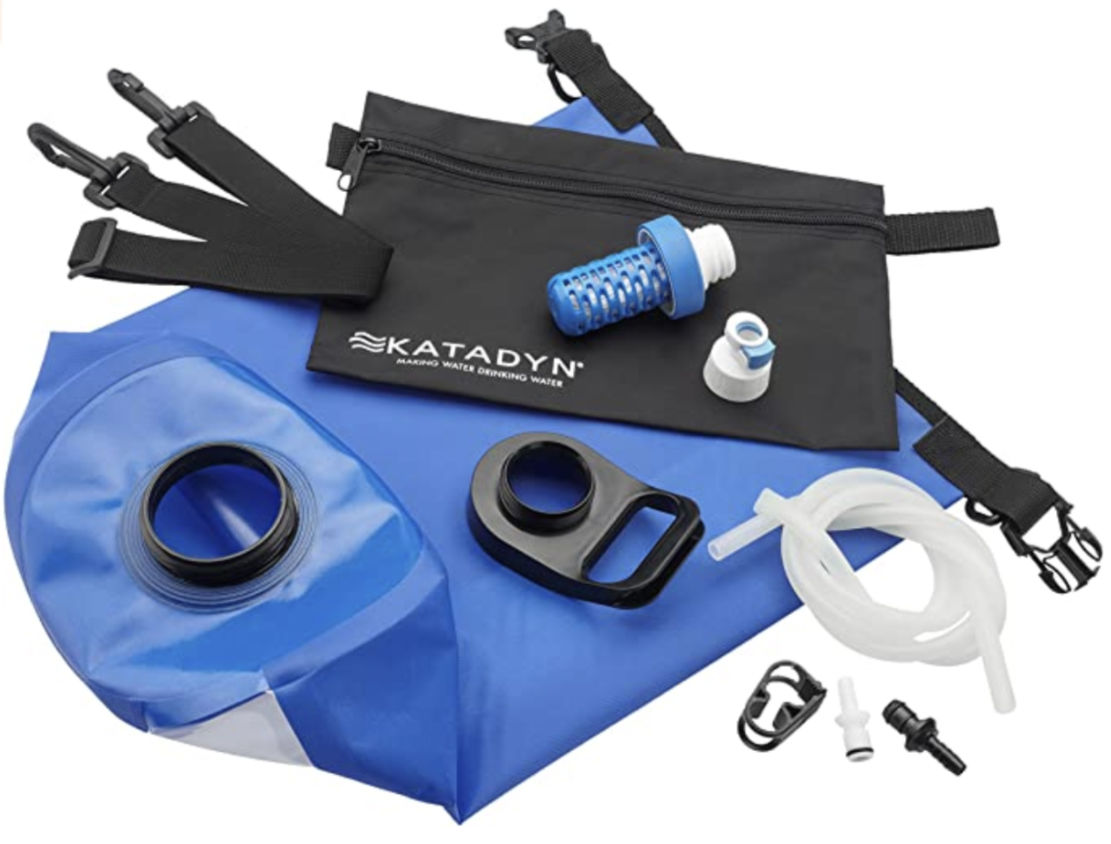
Katadyn Gravity BeFree Water Microfilter
This Swiss filter comes in 6 liter and 10 liter sizes (about 1.5 and 2.6 gallons). The entire top of the bag opens up. That makes it much easier to fill than a large bag with a small opening, even in shallow water.
Then, like a dry bag, you roll the top and clip the ends together. There’s a strap so you can hang it from any number of places, like the corner of a door or end of a roof rack.

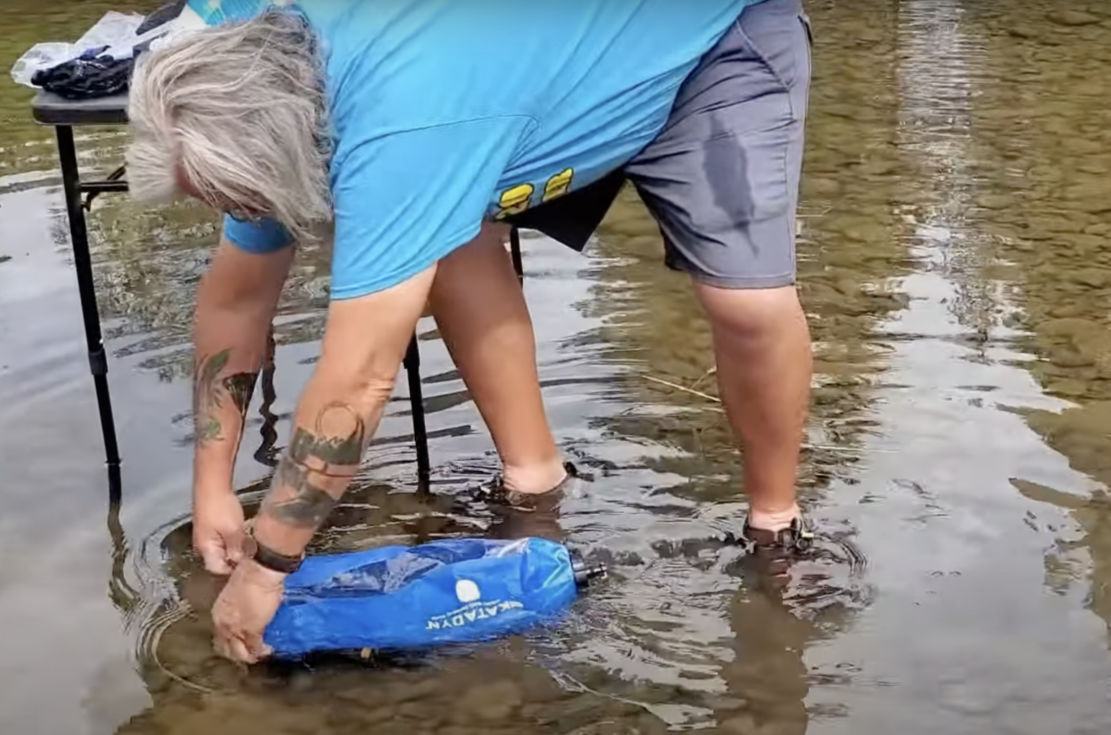

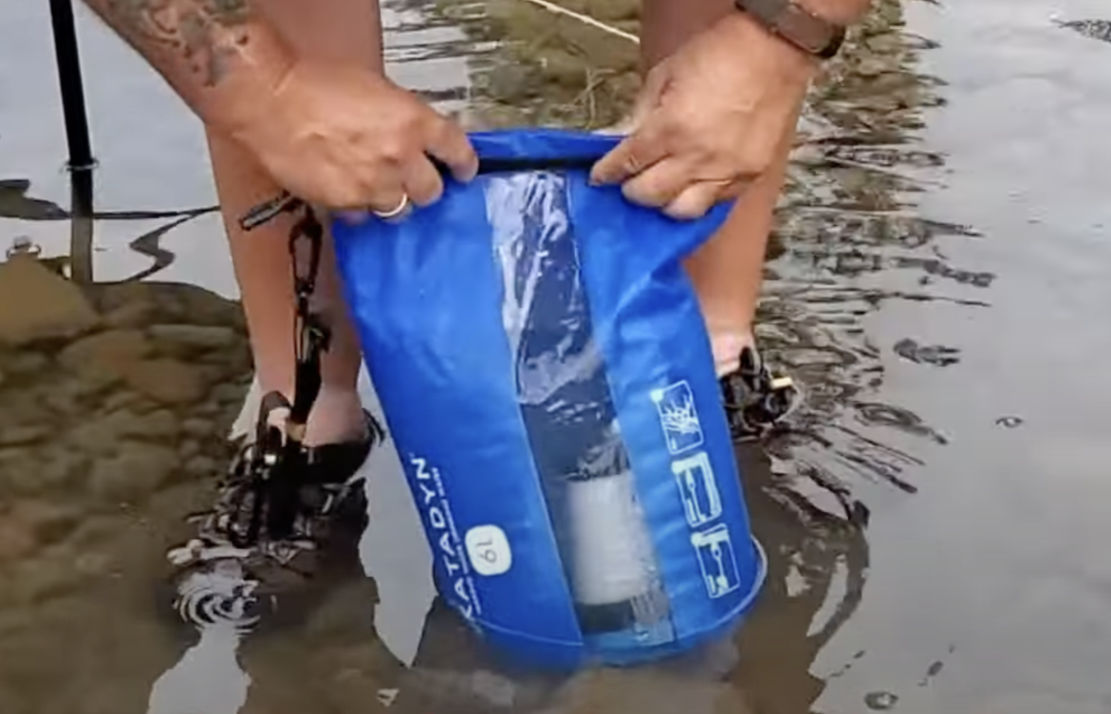
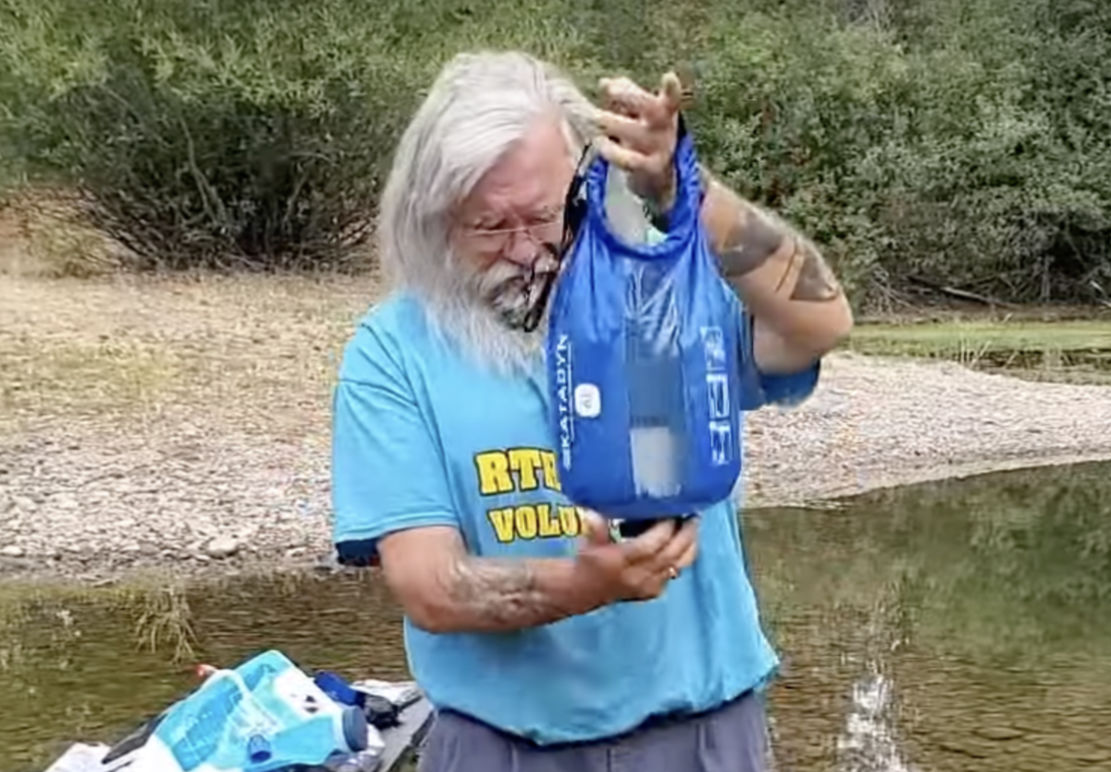
Unlike other units, the replaceable filter attaches inside the bag. That makes it easier to set up and store.


Snap the hose to the outside fitting and you’re in business. The Katadyne Gravity BeFree flows very well — better than the others I tested — so you won’t be waiting hours for a gallon of filtered water. When you’re done, just store the hose in the bag.


MSR Thru-Link In-line Filter plus a hydration pack bladder
Rather than an all-in-one product like the Katadyne, this solution combines the MSR filter with a hydration pack bladder of your choice — like the one you might already have. So you can either filter your hydration pack water as you drink it, or hang the bladder-filter combo like a gravity fed filter.
MSR has been making water filters for the military for a long time. Now they’re available for the consumer market.
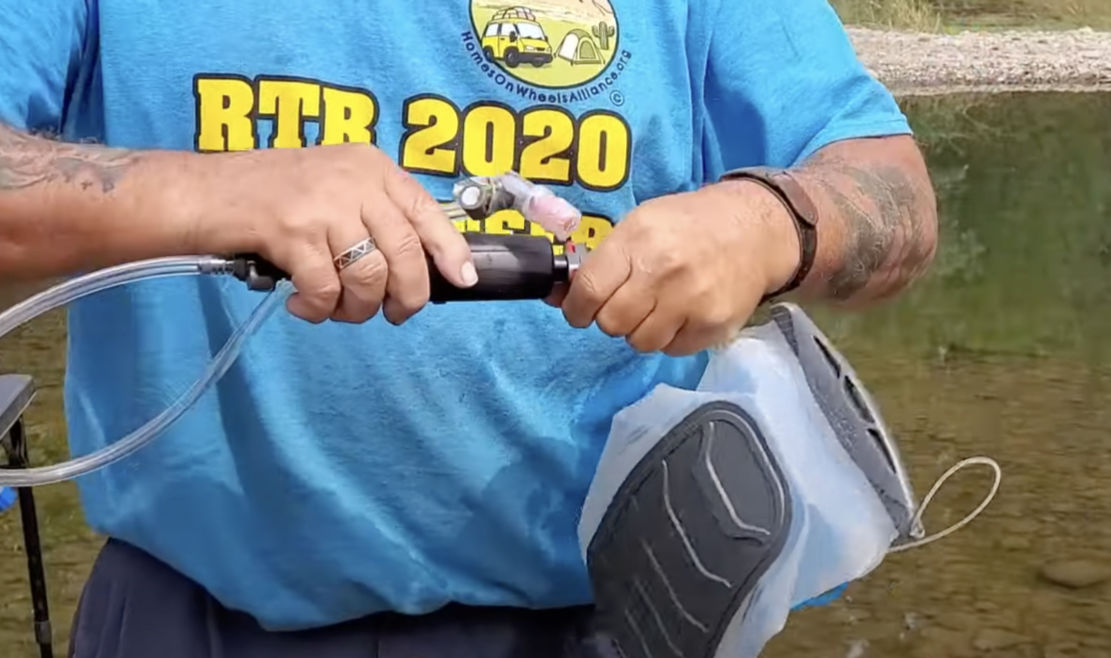

The Thru-Link is a combination charcoal and reverse osmosis filter. It connects via the same industry-standard quick connectors that most hydration bladders use. If you change bladders you can keep the filter. MSR also offers hoses that connect the filter to standard outside water faucets. I’ve encountered some campground, park, and gas station water that could’ve used some filtering.
Many hydration bladders, like the 2 liter Osprey I used, have wide openings (sort of like zip-lock bags) for easy filling.

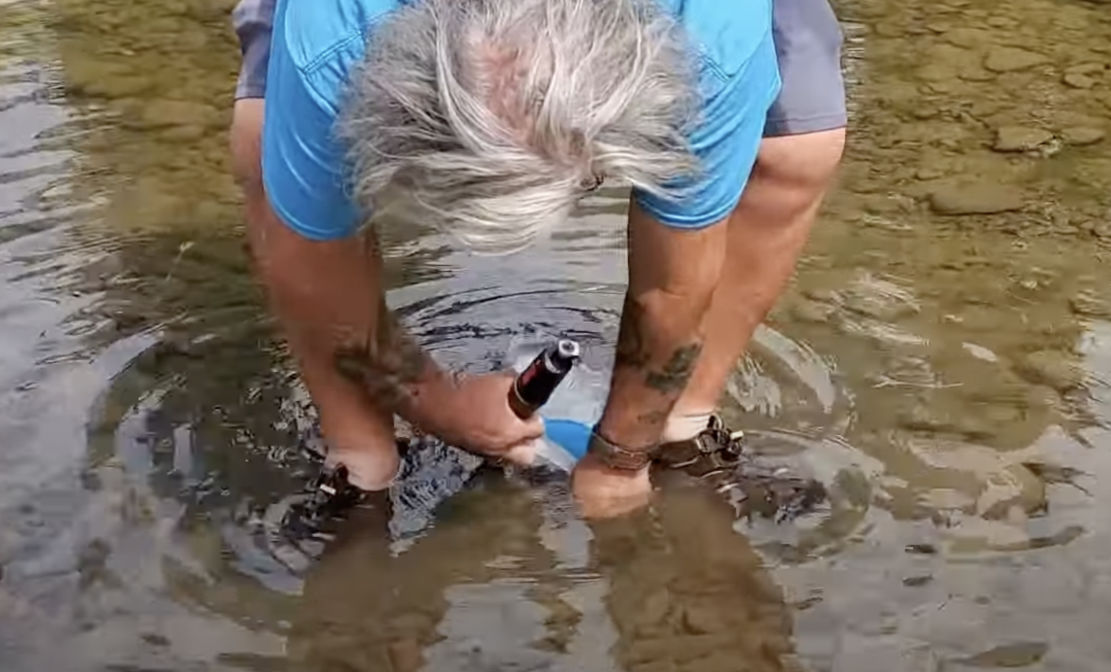
When used hiking, the filter is a little harder to suck water through than the hydration pack without a filter. That’s to be expected. But it flows well when used in gravity feed mode with a hose that doesn’t have a bite valve on the end. In a pinch, you could use the Thru-Link by itself, like a straw, drinking directly from the source of water.
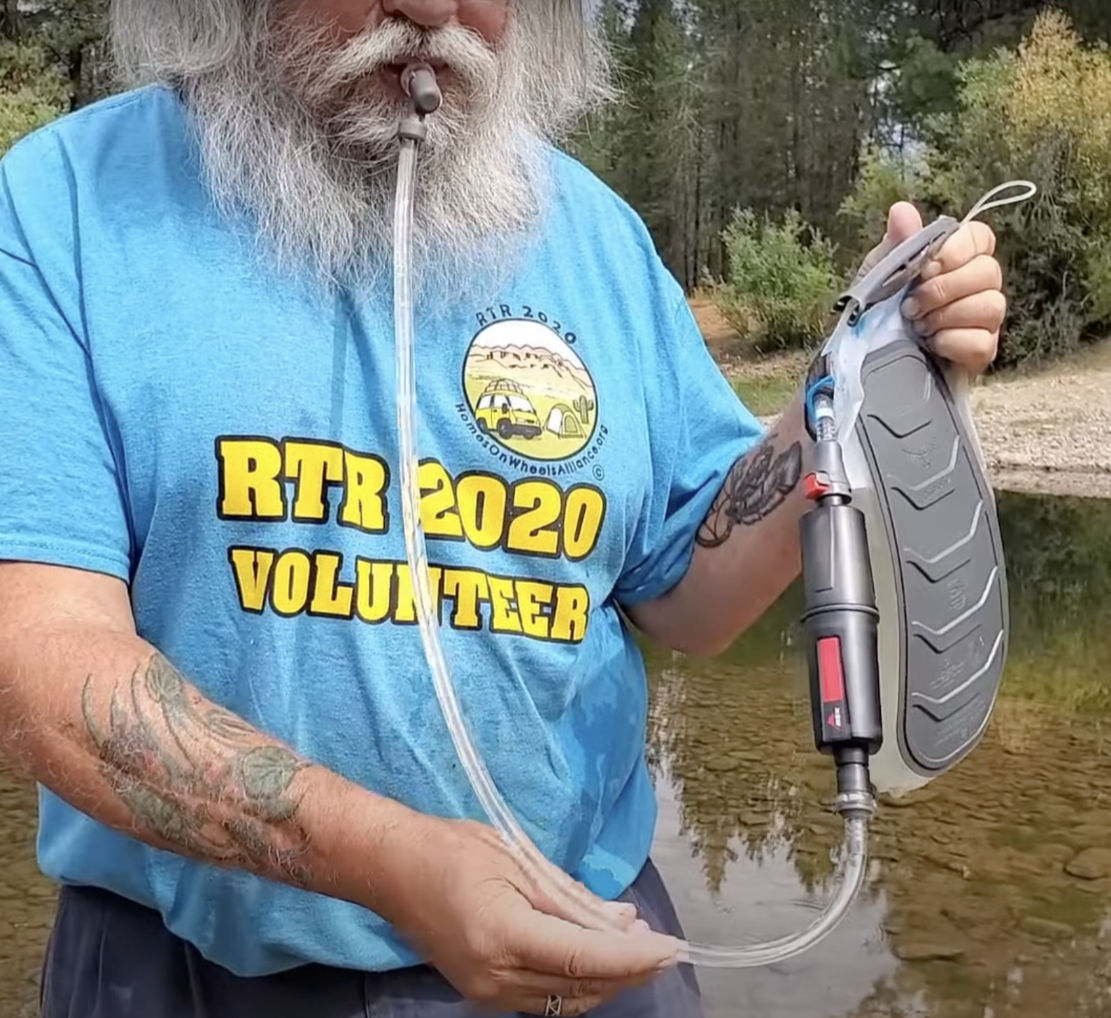

Purification
Both Katadyne and MSR sell purification tablets. They’re suggested not only for ridding water of viruses but also for water that isn’t used the same day it’s treated.
Conclusions
I highly recommend both of these water filters for their ease of use, speed and effectiveness. I think they’re the most useful type for vehicle dwellers.
Since I already have a hydration pack to use with an MSR filter, that’s my top choice. If you don’t have a bladder and don’t plan on getting one, then I think the Katadyne filter bag would be the way to go.
However, I’m not an expert on water filtration. Do your own research, read articles and reviews, and you might find something that meets your needs better. Let us know what you find.

Lime!
That’s all I use.
Squeeze some lime in it and go for it. ?
J, question, do you mean lime juice( lime the fruit ) ??
I have a question that doesn’t pertain to this subject and I’m not sure where to go to ask. I see many pictures of people enjoying their vans with their door doors wide open and I wonder how is this possible without draining the battery. Can you explain this to me please thank you
Well, in my case, with a Chevy Express, there’s a switch for the overhead light that lets me choose to not have the light come on when the doors open. Some vehicles have switches on the lights themselves so you can turn it on when the doors are closed, have it come on only when the doors open, or not come on at all.
thank you, i’ll look for that
I found the switch!
Thumbs up!
Hi I just watched a video today on Bob’s YouTube of a woman in a blue van that showed there is a Device that’s used on the battery that you turn 1 direction to stop losing power with all the doors open and then turn it the other direction when you close the doors and are ready to go.
https://m.youtube.com/watch?v=Yo_mwzXAXog
Thanks so much Bob & Al, for another excellent article & review of products! The step by step photos are always helpful for those of us who are visual. ?
Hi, I have a small Berkey that I have used for years! I am going to be car camping this winter want to make Quartzite! I am going to bring it in my car! It’s a little big but what I have. Any input on these?
They work very well, but as with any rigid object, they take up a certain amount of space — even when empty. I think they’re more at home on a countertop than in a car.
When using water filters, I always look into the filter’s pore size and supplement the filtering process with purification methods such as boiling or chemical tablets. Knowing the pore size is important to determine if the filter will be adequate for its intended use. Even after filtering, a few microorganisms may be present, and hence boiling or using purification tablets should be considered.
I really like the photos you included as they help a lot to visualize the method. I will make sure to share this article with my friends and also bookmark the site to make sure I don’t miss any future posts!